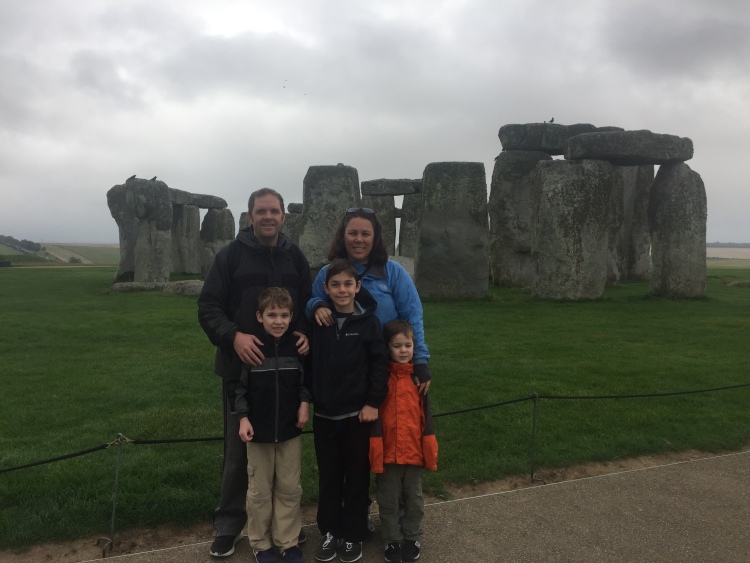
We spent a few days driving around Southern England at the start of a 6-week long road trip. Based on the places we wanted to visit, I decided to rent an airbnb in a central location, and ended up in a cute little town called Manton, just outside of Marlborough, about 2 hours west of London.
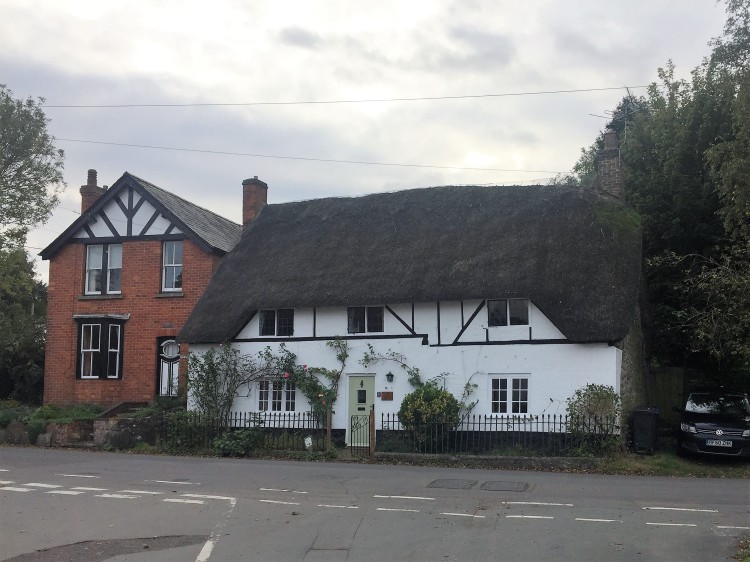
We stayed in a 17th century cottage, and it was so charming. Just what you would expect – short ceilings and door frames, crooked stairs and exposed wood beams.
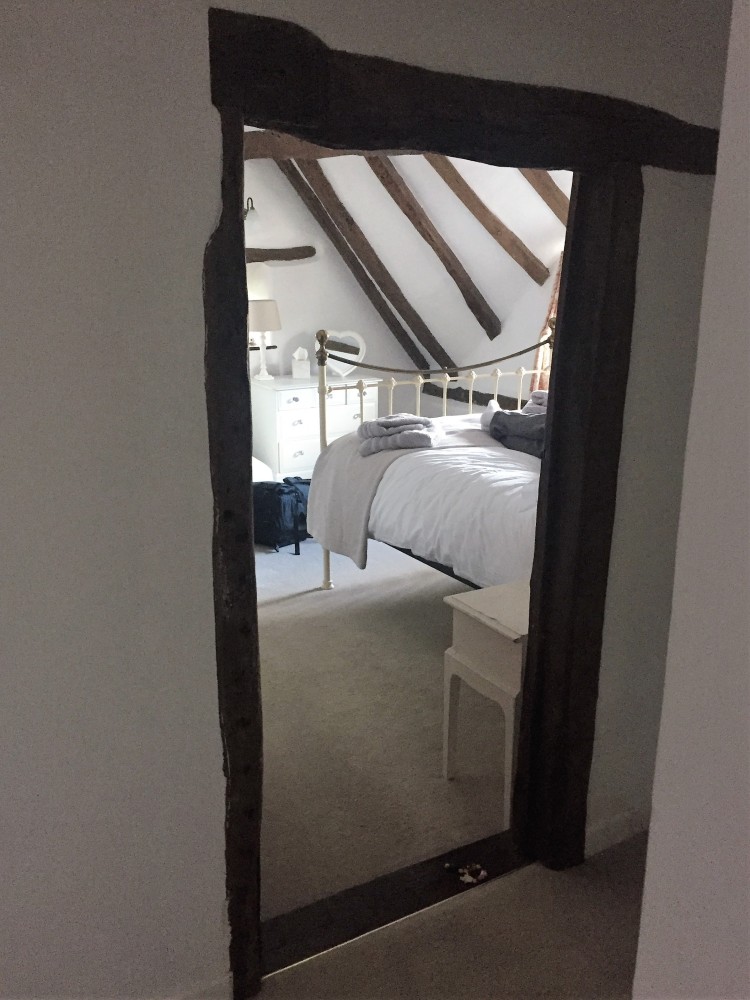
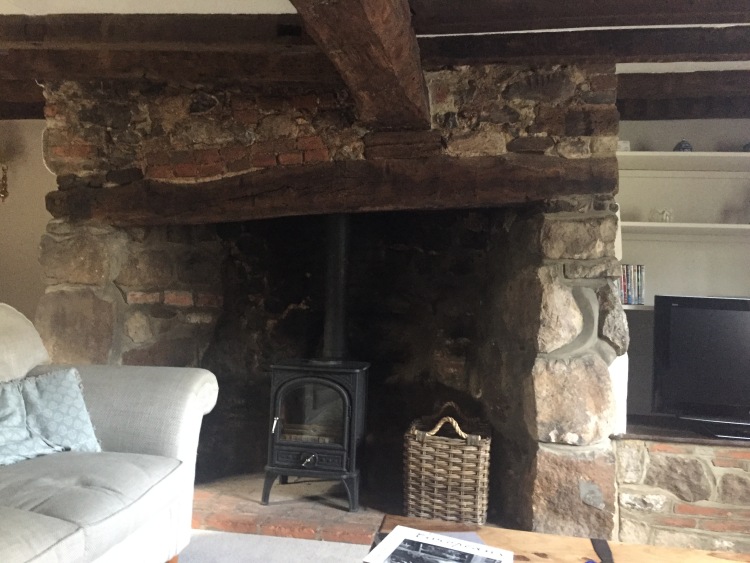
And apparently, it is in quite a posh area. The first night we ate in a local pub, and I spent the entire time subtly (I hope) listening to the family next to us talk with the most sophisticated accents I had ever heard! The 16-year old (ish) girl sounded exactly how I would expect a 50 year old woman who plans charity events to sound. It was fascinating. Then, as they left, much to the delight of C and me, the dad said “come along now, children”. Since then, I have tried using that instead of “let’s go!” with my kids, but they don’t really listen.

my not posh family at the restaurant
Despite our (my?) fascination with the posh English countryside where we stayed (did I mention that Princess Kate grew up about 1/2 hour from here?), we managed to accomplish quite a bit! Here is what we saw:
Stonehenge
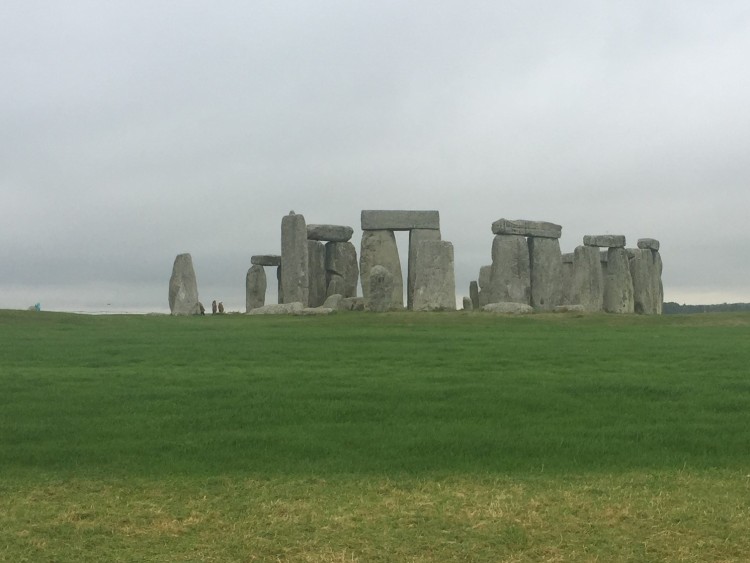
We couldn’t miss this! We decided to hit this first thing in the morning to avoid the crowds, and it was a good decision. We were there shortly after it opened, and beat all the tour buses that arrived shortly after us. 
Stonehenge was built about 5,000 years ago in the Neolithic period. No one knows for sure why it was built, but current theory holds that it was a place to commemorate the dead. There is no signs of people living in/next to the Henge, so they speculate they came here only on special occasions.
The large sarsens (stones) are thought to have been brought some 100-150 miles from Wales. It is amazing to think of what was required to pull those heavy rocks so far. I speak from first hand experience, as our family attempted to move a replica stone of the same weight, and we were able to move it exactly zero inches.
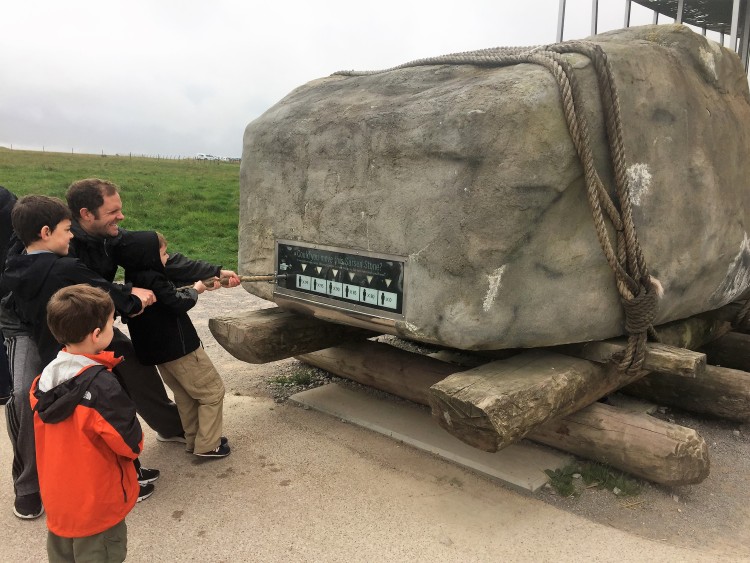
We circled around the outside of Stonehenge while the rain spit down on us. The boys were just happy to have a big green space to run around.
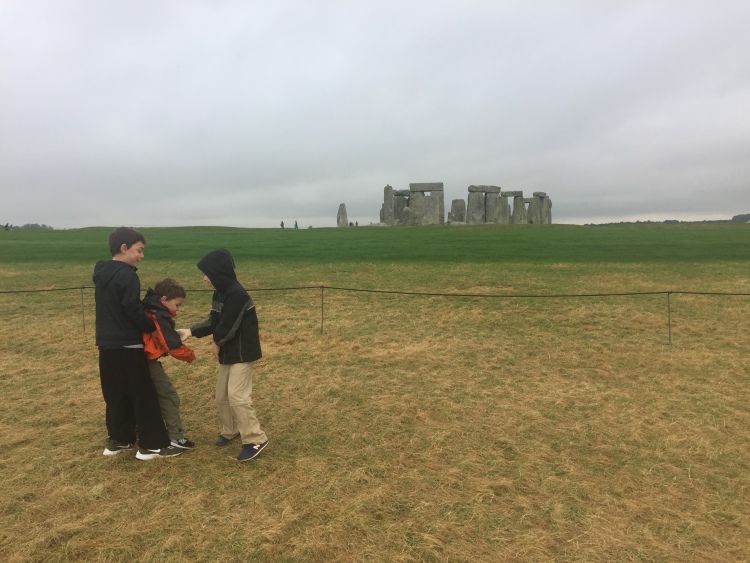
even if they are just playing, they are still soaking in the history, right? homeschool – check! 😉
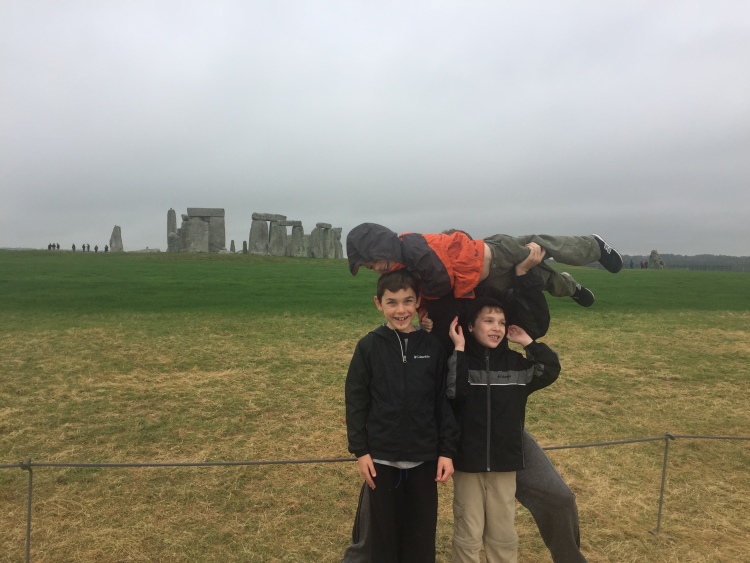
Trying to create their own Henge -did you know Stonehenge is one of the few standing stone monuments to still have the lintels – the stones lying across the top. Otherwise known as the “N” stone in our family Henge.
Once you see the Henge, there isn’t a whole lot to do, so we just walked around a bit, as the crowds started pouring in.
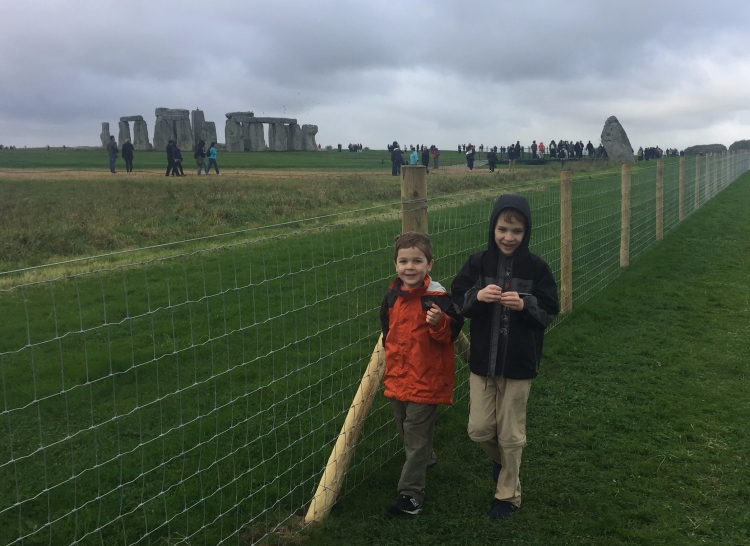
Check out the crowds around Stonehenge now
Salisbury
Just south of Stonehenge is the town of Salisbury, known for its cathedral. We headed there for lunch (it was delish!) and a stroll to the cathedral. It has a nice walking area along the river Avon (did you know Avon comes from an ancient Celtic word for “river”, so basically it means “River River”).
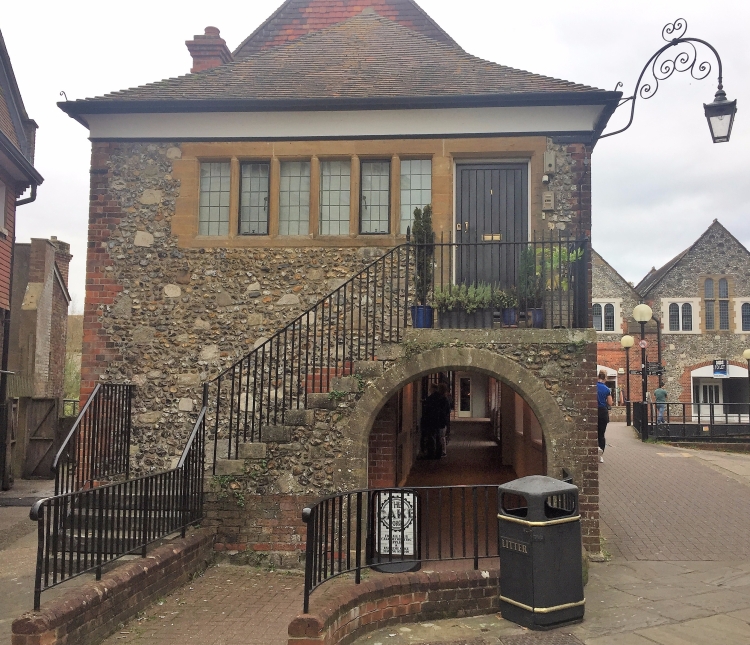

A stroll along the River Avon (notice anything funny about any of the store signs?)
Old Sarum
I admit that we never would have gone to Old Sarum, even though it is an English Heritage site near Salisbury, if it weren’t for the fact that I read the book Sarum by Edward Rutherfurd, which took place at Old Sarum. I really enjoyed the book, a historical fiction novel that follows a few families who lived in Sarum over a few millenia.
Sarum, as any reader of the book would know ;-), has been occupied for a very long time, but the main ruins are a castle and cathedral from medieval times. This ended up being N’s favorite spot, and he still talks about it. According to him “I thought it would be really boring, but I ended up loving it!”.
Of course, it wasn’t the beautiful view of Salisbury in the distance that he loved….
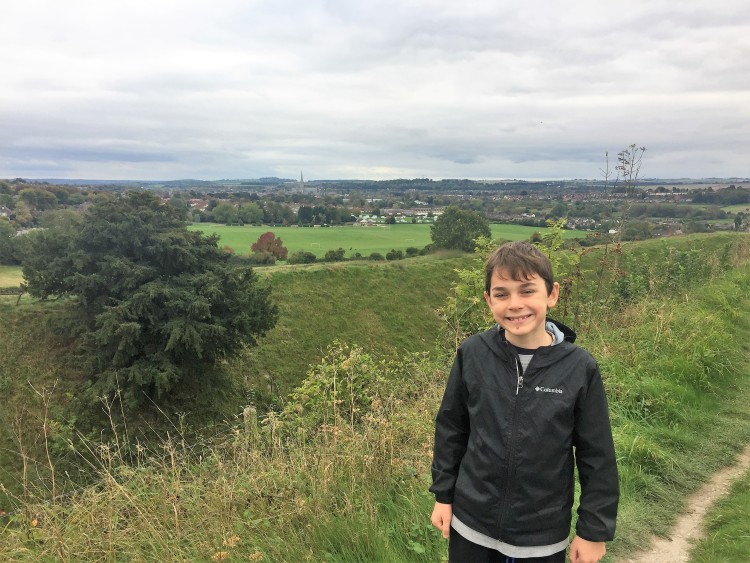
Nor the grass-covered ruin of the castle at the top of the hill…
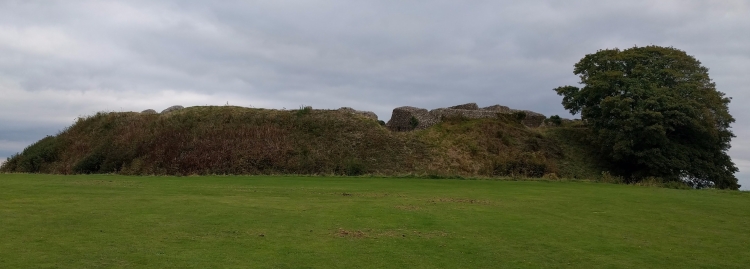
Nor the ruins of the cathedral…
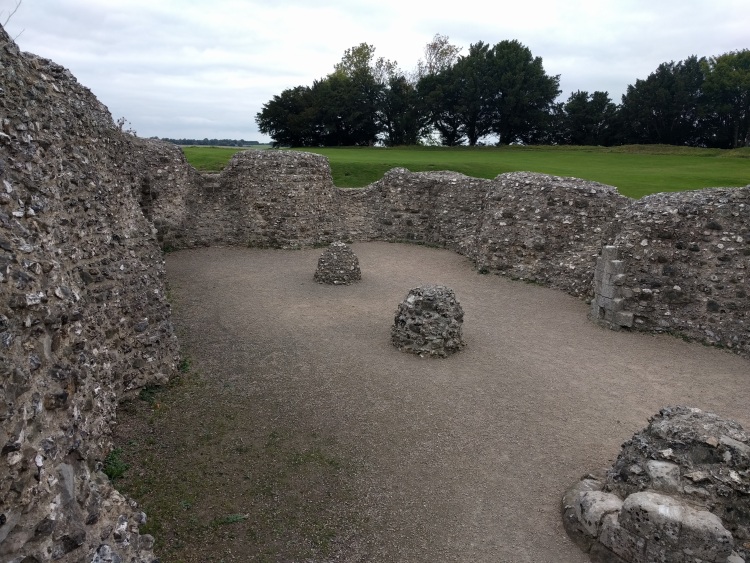
It was just the huge green space, and slope the boys had a blast running up and down.
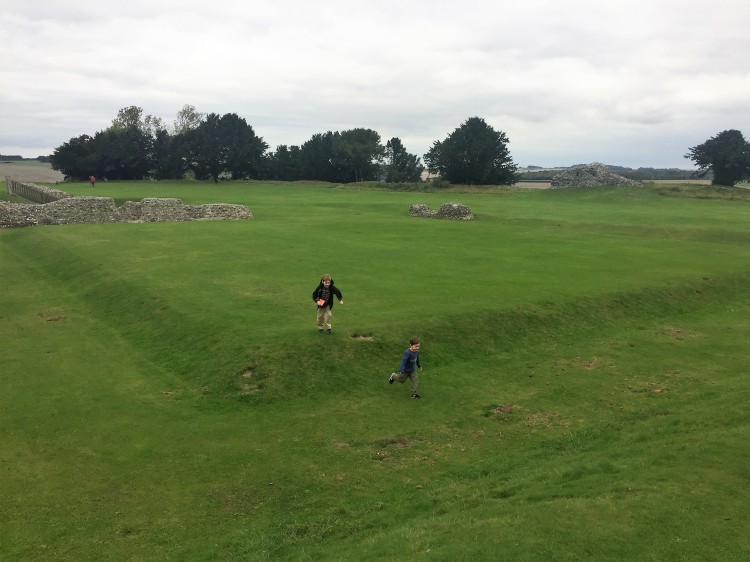
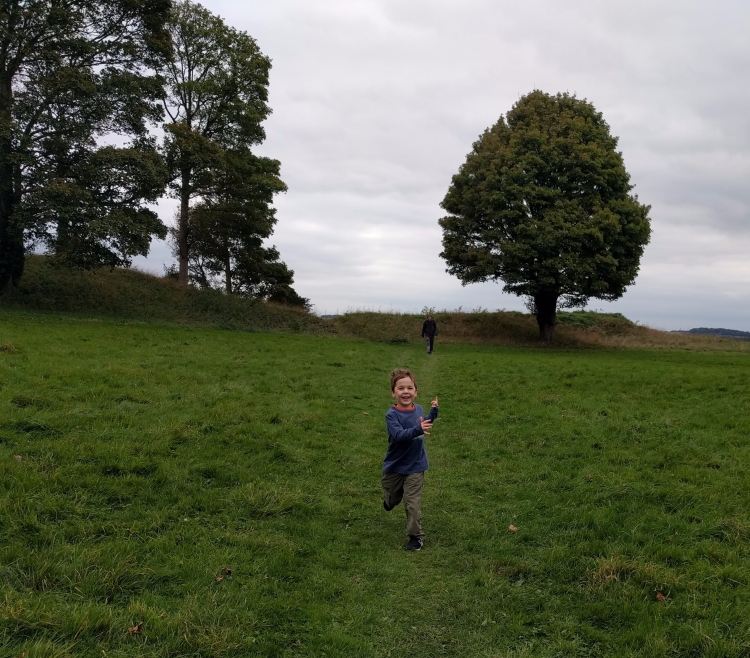
He loved being the leader and running ahead to make sure the path was safe for the rest of us
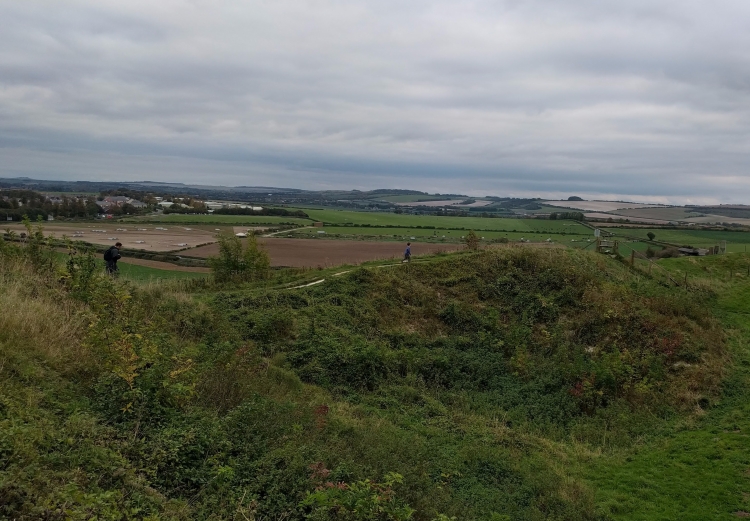
At this point, I’m trying to balance giving him the freedom to run ahead with freaking out about the fairly large drop off on the other side
Avebury
The town of Avebury was very close to where we stayed in Manton, so we headed there one morning, to look at the largest stone circle in Britain. Before heading to the town, we took a walk to a few more neolithic sights nearby.
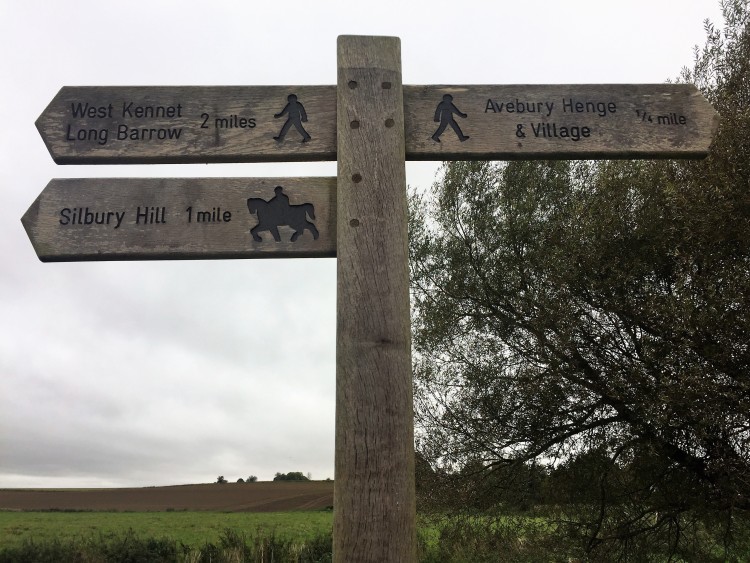
The first sight we saw was Silbury Hill, the largest man-made mound in Europe. No one knows why it was built around 2400 BC, but it compares in size and volume to the Egyptian pyramids!
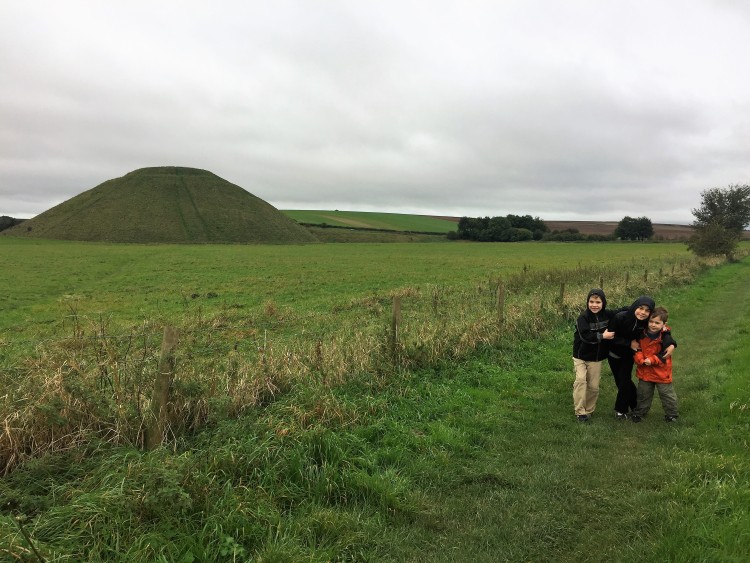
Silbury Hill is surrounded by flat pasture lands, so it is hard to get a good idea of just how big it is, but if you look at the picture below, which I took from the top of a nearby hill, you can see how tiny C looks walking down the hill, and the tiny dots at the bottom of the hill to his left are A and L. The trees at its base are also good for perspective. Remember – the size of the Egyptian pyramid.
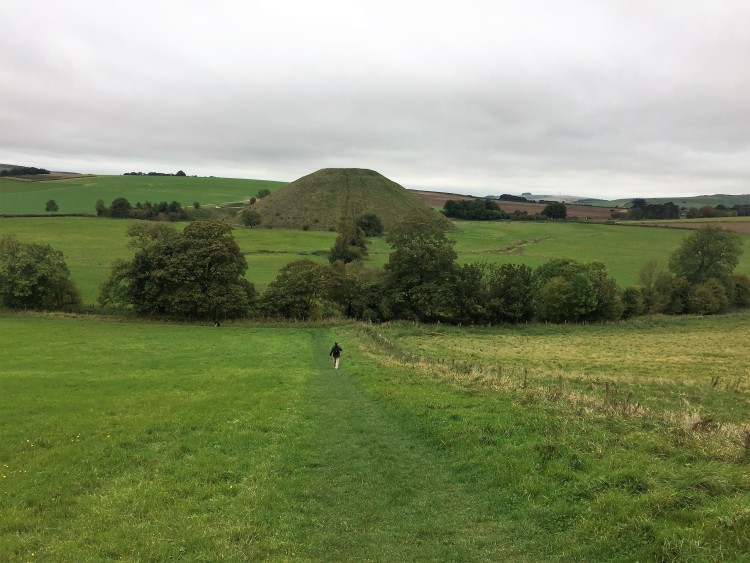
After checking out (well, really just walking by) Silbury Hill, we continued on to West Kennet Long Barrow. A long name to describe one of the largest, most impressive and most accessible Neolithic chambered tombs in Britain, according to the English Heritage website.
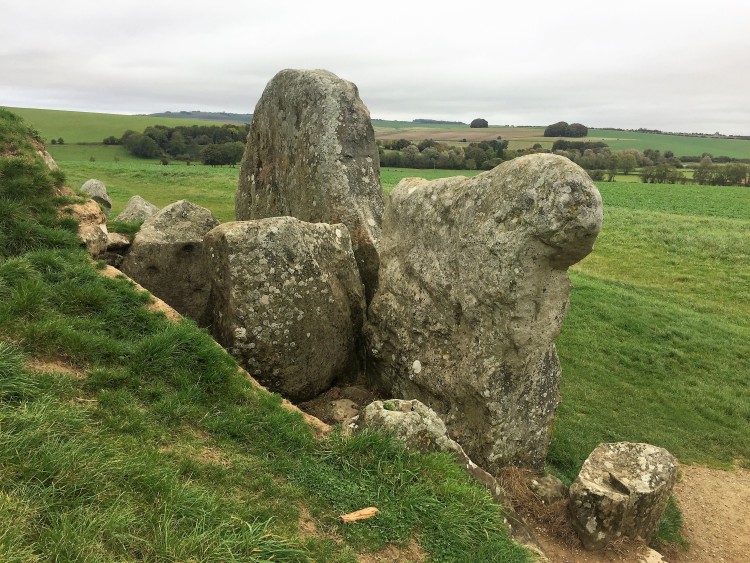
It is more than 5,500 years old and large sarsen boulders covered the entrance. There is still a boulder you have to walk around to get inside.
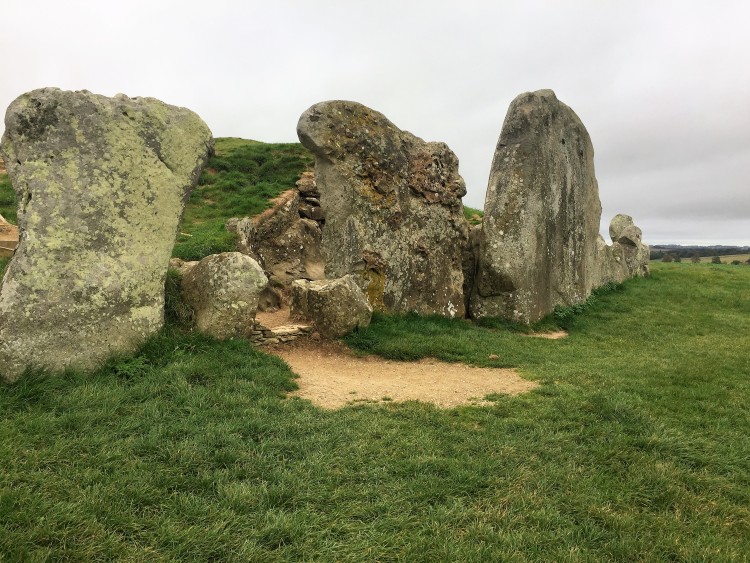
The boys had a ton of fun running in and out of the dark tombs (that sounds really creepy, doesn’t it?!). We were the only ones there, so they were free to scream and play and make all the noise they wanted to. They had fun recording videos to send to our family, and scaring the camera (and themselves) by popping out of the dark.
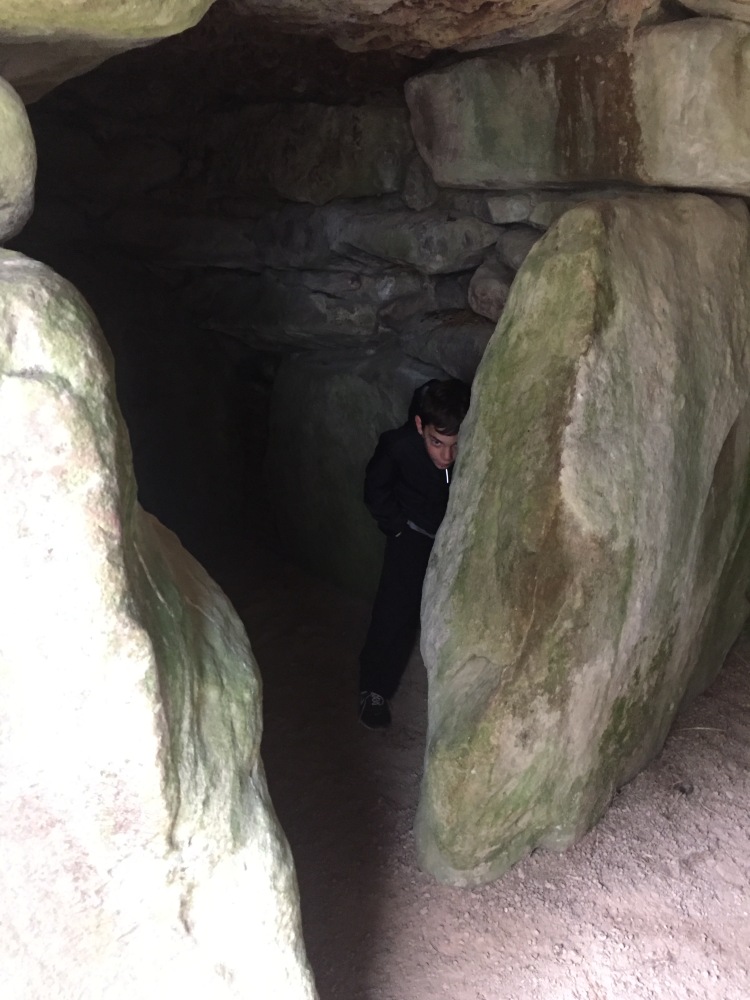
It was a neat place to visit, though when I think about how they found the bones of 50 or so people who died about 4,500 years ago, it does seem a little spooky!
After our time at the barrows, we took the walking path back to Avebury to see the standing stone circle.
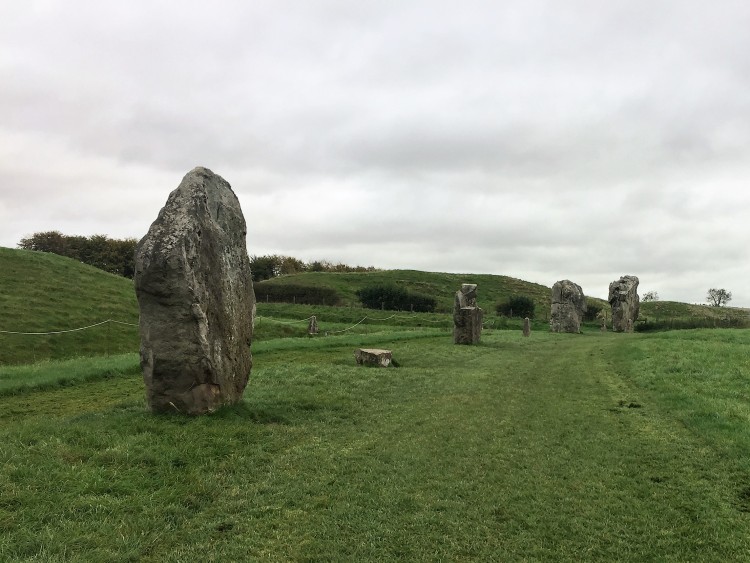
This stone circle was enormous – way bigger than Stonehenge and originally containing about 100 stones in its outer circle. The town of Avebury lies within the circle, so as we walked around the circle, we crossed roads and walked around buildings.
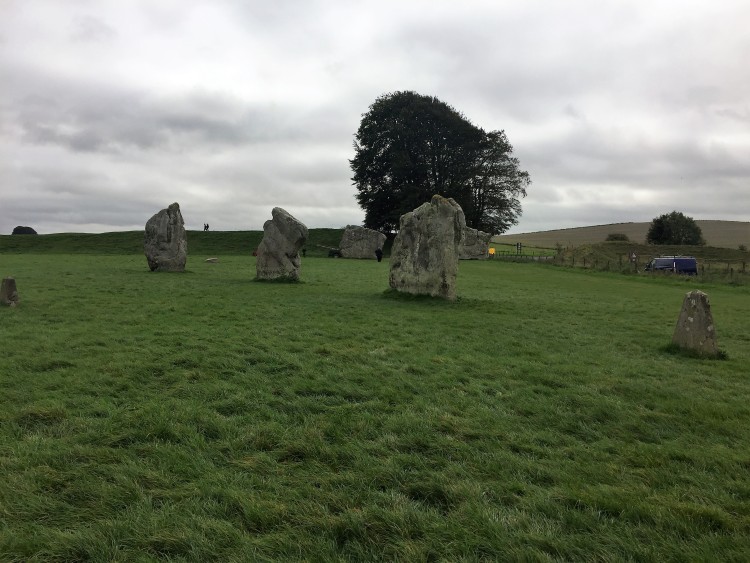
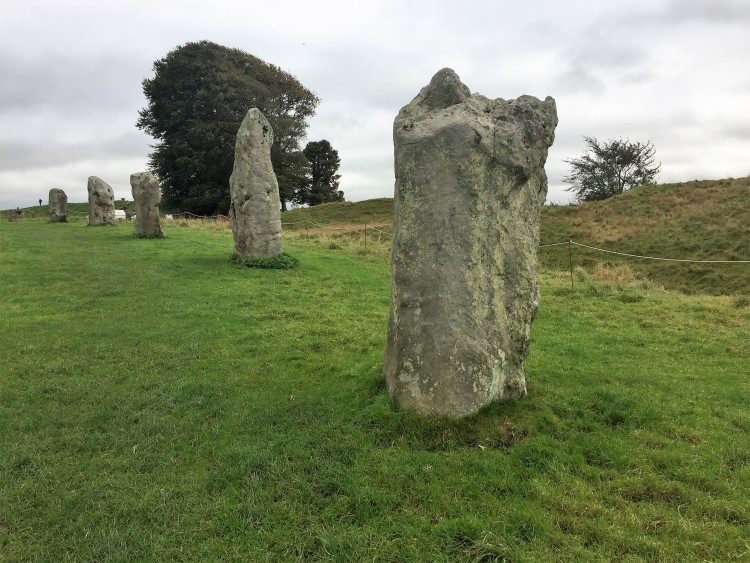
It is hard to tell the scale of the stones, so here are a few pictures with people in them.
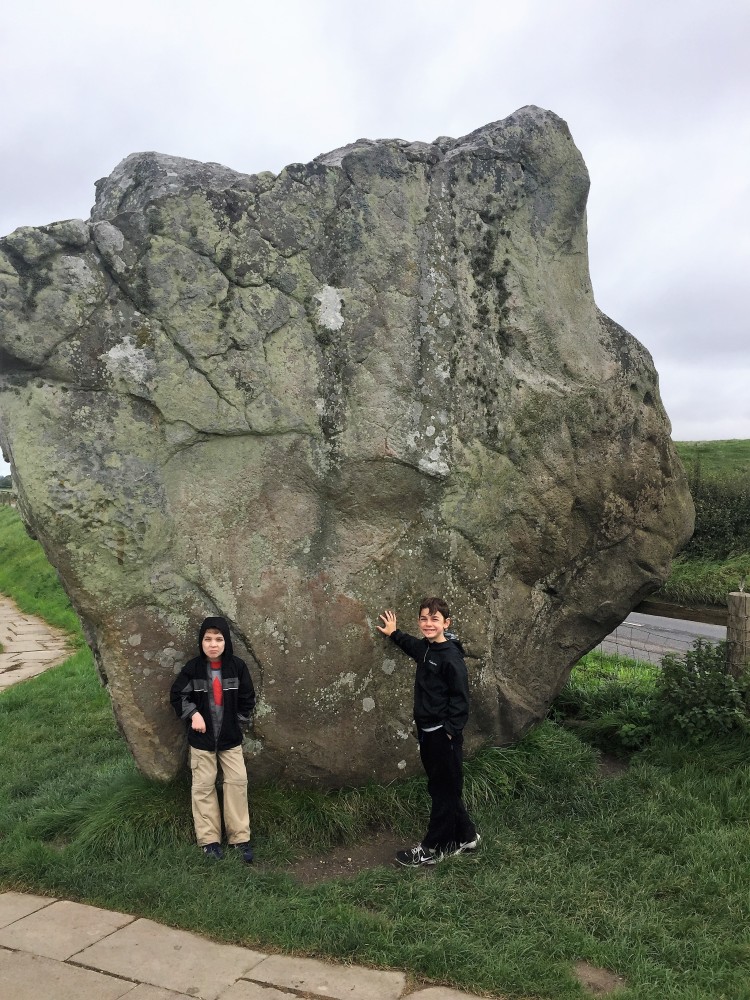


Had to try it. Didn’t work, but just as well, since I wasn’t dressed for the occasion. #outlander
One of the fields with standing stones seemed to be a home to lots of sheep. It was an interesting combo – standing stones, sheep and tourists.
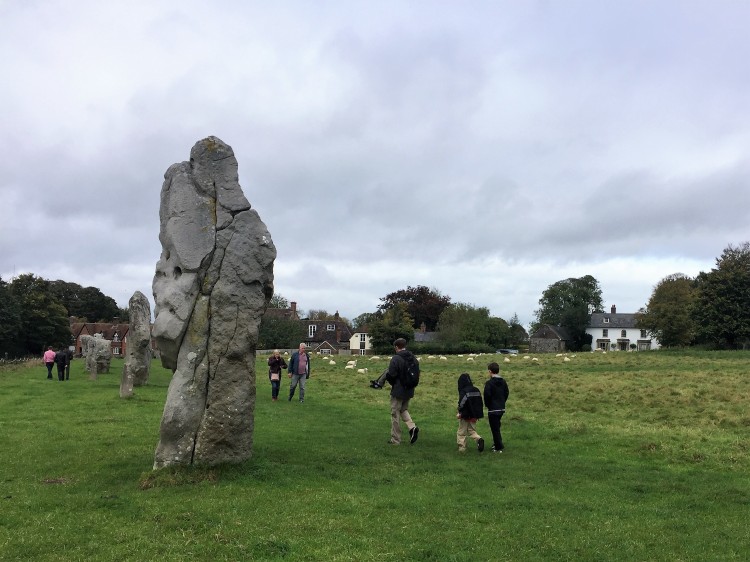
N was rather freaked out by the volume of sheep poop in the ground – he insisted on being carried
Bath
No, N didn’t insist on a bath after walking through all that sheep poo. We went to Bath. It is known for its Roman-era baths. A geothermal spring bubbles from the ground here, which the Romans took full advantage of when they constructed a temple here around 60-70 AD. Over the following 300 years, a huge bathing complex was built up.
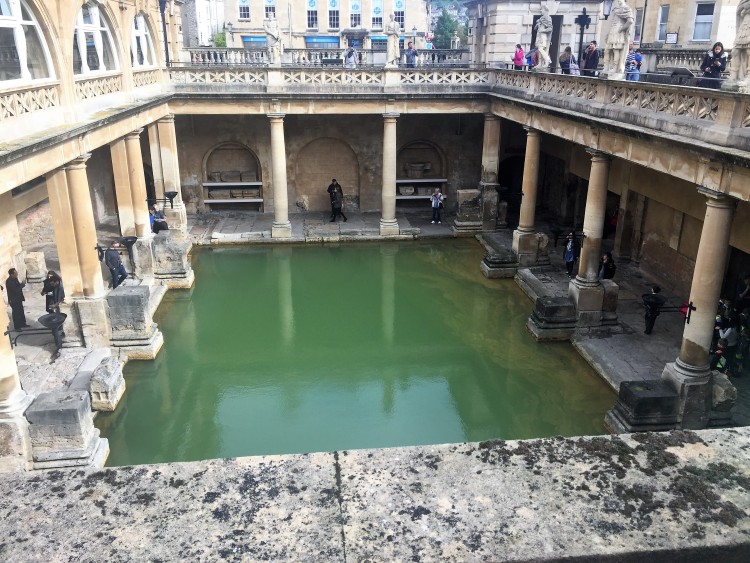
The museum was pretty well done, with an audio guide (a kid’s version is available). We walked through the museum, learning about what the complex looked like during its heyday, and viewing the artifacts found around and, in many cases, in the springs. It was pretty interesting to see some of the areas that weren’t restored, but still provided a clear picture of what the town would have looked like almost 2,000 years ago.
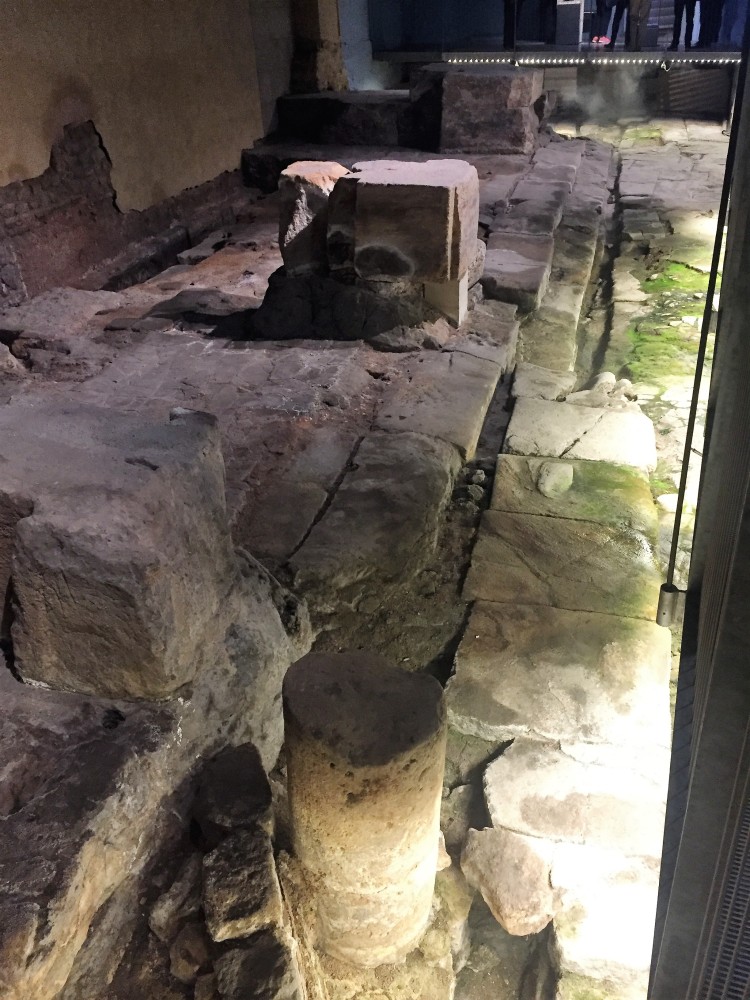
This was an actual pathway from the Roman times, and it was housed inside the building. The way it was set up made it easy for me to imagine life back then.
At the end of the self-guided tour, we ended up in the actual bath area. However, the water is full of lead, so touching it is strictly forbidden.
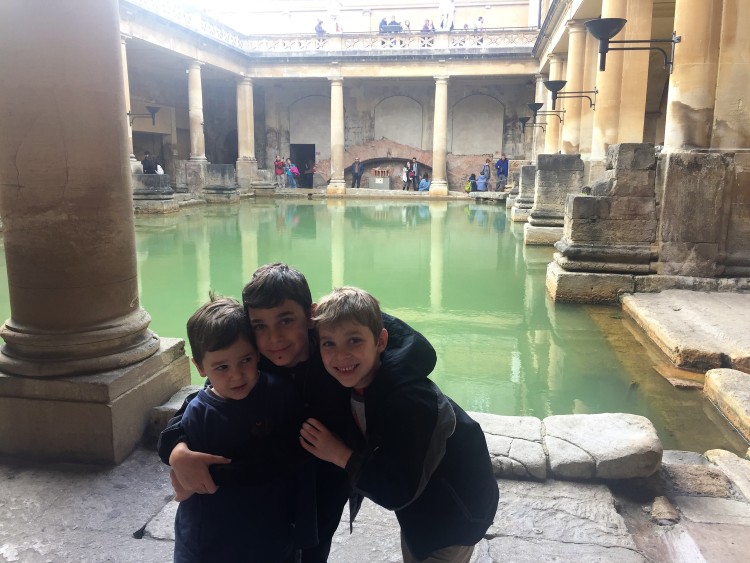
Then we took some time to take a funny picture. C had an idea in his head of how this picture would work out. I’m not sure if we hit the mark.
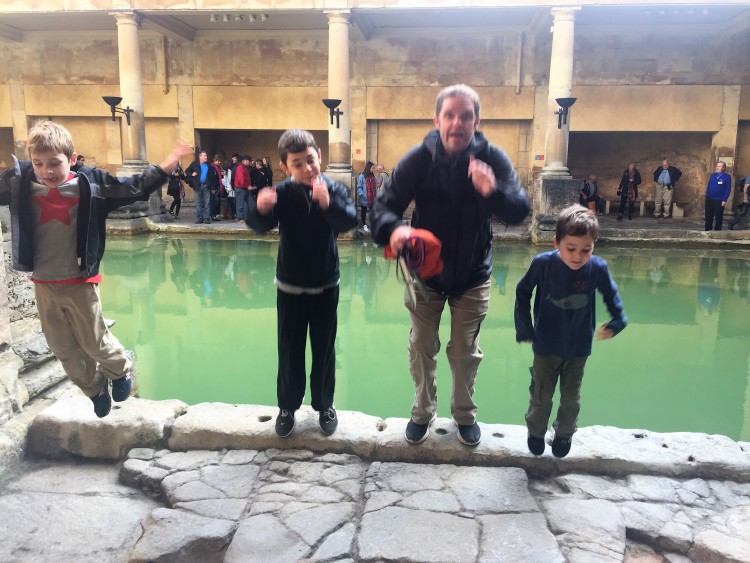
L always went early!
We spent a little time walking around the rest of Bath (pretty much just long enough to find some ice cream 😉 ).

The Bath Abbey
Bath was a nice town, and we all found the Roman baths pretty interesting. But, for me, after spending so much time looking around the neolithic sights, this Roman-era sight seemed shockingly modern.
Nonetheless, it was an interesting few days in Southern England, and I think we all agreed we would like to go back and explore the area some more. However, the continent awaits, so we are off to catch the Channel tunnel (something L & N were VERY excited for!).
More on that, and our next stop, Bruges, Belgium, in the next post!


